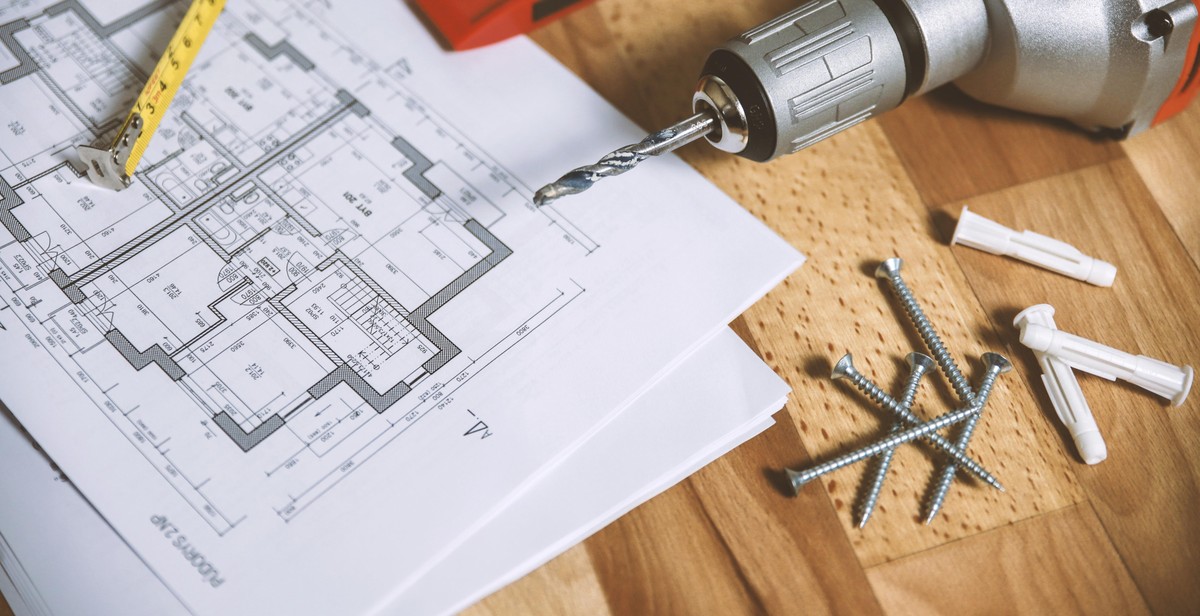How to Design an Adaptive Architecture: Creating Spaces for Changing Needs and Accessibility
Adaptive architecture is a design approach that focuses on creating flexible and responsive buildings that can accommodate changing needs over time. This approach is becoming increasingly important as our society continues to evolve and change, and as the needs of different users and communities become more diverse and complex.
Why Adaptive Architecture Matters
Adaptive architecture is essential for creating spaces that are accessible and inclusive for all users, regardless of their age, ability, or background. It allows buildings to be designed in a way that can easily adapt to changing needs, whether that be due to changes in technology, demographics, or social trends.
Adaptive architecture also has significant environmental benefits, as it allows buildings to be designed with a focus on sustainability and resource efficiency. By creating buildings that can adapt to changing environmental conditions, we can reduce the impact of the built environment on the natural world.
This article will explore the key principles of adaptive architecture and provide practical guidance on how to design buildings that are flexible, responsive, and accessible. It will also highlight some of the most innovative examples of adaptive architecture from around the world, and discuss the challenges and opportunities that this approach presents for architects, designers, and builders.

Understanding Adaptive Architecture
Adaptive architecture refers to a design approach that focuses on creating spaces that can easily adapt to changing needs and accessibility requirements. This approach recognizes that buildings and spaces need to be flexible enough to accommodate the evolving needs of their users over time.
Defining Adaptive Architecture
Adaptive architecture is all about creating spaces that can easily adapt to changing needs and accessibility requirements. It involves designing buildings and spaces that are flexible enough to accommodate the evolving needs of their users over time. This can include everything from designing spaces that can be easily reconfigured to accommodate different uses, to incorporating features that make a building more accessible to people with disabilities.
The Benefits of Adaptive Architecture
- Flexibility: Adaptive architecture allows buildings and spaces to be easily adapted to changing needs, making them more versatile and functional over time.
- Accessibility: By incorporating features that make a building more accessible to people with disabilities, adaptive architecture can help ensure that everyone can use and enjoy a space.
- Cost-effectiveness: Designing a building or space with adaptability in mind can help reduce the need for costly renovations or modifications down the line.
- Sustainability: By designing buildings and spaces that can easily adapt to changing needs, we can reduce the need for new construction and minimize waste.
The Challenges of Adaptive Architecture
While adaptive architecture offers many benefits, it also presents some challenges. For example, designing for adaptability can be more complex and require more thought and planning upfront. Additionally, incorporating features to make a building more accessible can be costly and require specialized knowledge and expertise.

Designing for Changing Needs
One of the key factors to consider when designing an adaptive architecture is flexibility and modularity. Spaces need to be able to adapt to changing needs and uses over time. This means designing spaces that can be easily reconfigured, expanded or reduced in size, and can accommodate a variety of different functions.
One way to achieve this is through the use of modular construction techniques. Modular buildings are built off-site in sections and then assembled on-site, allowing for quick and easy reconfiguration of spaces. Modular construction also allows for easy expansion or reduction of a building’s size.
Accessibility and Universal Design
Another important consideration when designing for changing needs is accessibility. Spaces need to be designed to accommodate people of all abilities and ages. This means incorporating universal design principles into the design process.
Universal design is the design of products and environments that are usable by all people, to the greatest extent possible, without the need for adaptation or specialized design. This means designing spaces that are easy to navigate, with wide doorways and hallways, and with features such as grab bars and non-slip surfaces.
Future-Proofing Your Design
Finally, future-proofing your design is essential when designing for changing needs. This means designing spaces that can adapt to changing technologies and ways of living.
One way to future-proof your design is through the use of flexible technology. This includes the use of smart home technology, such as automated lighting and heating systems, as well as the use of flexible furniture and fixtures that can be easily reconfigured or adapted to changing needs.
In addition, designing spaces with sustainability in mind can also help future-proof your design. This means designing spaces that are energy-efficient, with features such as solar panels and rainwater harvesting systems, and using sustainable materials in construction.
By considering flexibility and modularity, accessibility and universal design, and future-proofing your design, you can create an adaptive architecture that is able to meet the changing needs of its users over time.

Creating Adaptive Spaces
Adaptive architecture is all about creating spaces that are flexible and can adapt to changing needs and accessibility. Here are some ways to design spaces that can adapt to different requirements:
Maximizing Space Efficiency
One of the key principles of adaptive architecture is maximizing space efficiency. This means designing spaces that can be used for multiple purposes and can adapt to changing needs. For example, a room that can be used as a bedroom, a home office, or a playroom for kids. This can be achieved by using modular furniture, flexible partitions, and built-in storage solutions that can be easily reconfigured.
Using Technology to Enhance Adaptability
Technology can play a crucial role in creating adaptive spaces. Smart home systems, for example, can be used to control lighting, temperature, and other environmental factors to create a comfortable and adaptable living space. Additionally, integrating assistive technology, such as voice-activated controls and adjustable-height workstations, can enhance accessibility and make the space more adaptable to users’ needs.
Designing for Multiple Uses
Designing for multiple uses is another key aspect of adaptive architecture. This means creating spaces that can be used for different activities at different times of the day. For example, a living room that can be used for watching TV, entertaining guests, or as a home office during the day. This can be achieved by incorporating flexible seating arrangements, movable partitions, and multi-functional furniture.
| Item | Function |
|---|---|
| Convertible Sofa Bed | Can be used as a sofa during the day and a bed at night |
| Murphy Bed | Folds up into the wall to create more space when not in use |
| Storage Ottoman | Can be used for seating and storage |
Designing adaptive spaces requires a holistic approach that considers the needs of different users and the potential for changing requirements over time. By maximizing space efficiency, using technology to enhance adaptability, and designing for multiple uses, architects and designers can create spaces that are flexible, adaptable, and accessible.

Examples of Adaptive Architecture
Adaptive architecture is all about creating spaces that can adapt to changing needs and accessibility. Here are some examples of buildings that have been designed with adaptability in mind:
The Edge, Amsterdam
The Edge is a sustainable office building in Amsterdam that uses a variety of technologies to create a highly adaptable and energy-efficient space. The building features a smart lighting system that adjusts to the level of natural light in the room, as well as a mobile app that allows employees to control their workspace settings. The Edge also has a flexible floor plan that can be easily reconfigured as needed, and its modular design means that it can be expanded or contracted to accommodate changing space requirements.
The Crystal, London
The Crystal is a sustainable events and exhibition space in London that was designed to be highly adaptable. The building features a flexible floor plan that can be easily reconfigured to accommodate different events, as well as a range of sustainability features, such as solar panels and rainwater harvesting. The Crystal also has a range of accessibility features, including step-free access, braille signage, and a hearing loop system.
The Bullitt Center, Seattle
The Bullitt Center is a net-zero energy office building in Seattle that was designed to be highly adaptable and sustainable. The building features a flexible floor plan that can be easily reconfigured to accommodate different tenants and changing space requirements, as well as a range of sustainability features, such as solar panels, rainwater harvesting, and a composting toilet system. The Bullitt Center also has a range of accessibility features, including step-free access, braille signage, and a hearing loop system.
| Building | Location | Adaptability Features | Sustainability Features | Accessibility Features |
|---|---|---|---|---|
| The Edge | Amsterdam | Smart lighting system, mobile app, flexible floor plan, modular design | Energy-efficient technologies | Step-free access, braille signage, hearing loop system |
| The Crystal | London | Flexible floor plan | Solar panels, rainwater harvesting | Step-free access, braille signage, hearing loop system |
| The Bullitt Center | Seattle | Flexible floor plan, sustainable building systems | Solar panels, rainwater harvesting, composting toilet system | Step-free access, braille signage, hearing loop system |

The Future of Adaptive Architecture
Adaptive architecture is the future of building design. As our society continues to evolve and change, so too must our buildings. Adaptive architecture is the answer to creating spaces that are flexible enough to accommodate changing needs and accessibility requirements.
As technology advances, we will see more and more buildings that are designed to adapt to the needs of their occupants. This will include everything from smart homes that can adjust lighting and temperature based on the user’s preferences, to entire buildings that can change shape and layout depending on the needs of the people inside.
Benefits of Adaptive Architecture
- Increased accessibility
- Greater flexibility
- Improved sustainability
- Enhanced user experience
Adaptive architecture is not only beneficial for the people who use the buildings, but also for the environment. Buildings that are designed to adapt to changing needs are inherently more sustainable, as they can be used for longer periods of time without needing major renovations or upgrades.
Conclusion
Adaptive architecture is the future of building design. By creating spaces that can adapt to changing needs and accessibility requirements, we can ensure that our buildings remain functional and relevant for years to come. As technology continues to advance, we will see more and more buildings that are designed to be flexible and responsive to the needs of their occupants. This is an exciting time for architecture, and we can’t wait to see what the future holds.
